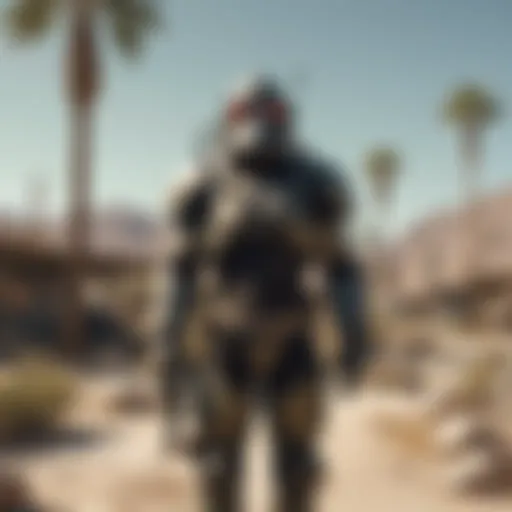Exploring Fallout Equestria: A Unique Fan-Driven Narrative
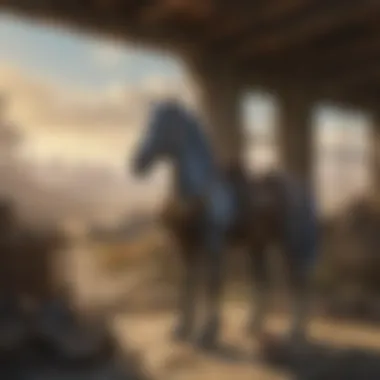

Intro
In the vast landscape of fan fiction, few works have captured the imagination like Fallout Equestria. This fan-driven universe intertwines elements from the beloved My Little Pony franchise with the bleak, post-apocalyptic world of Fallout. It's a fusion that, at first glance, seems odd but upon deeper inspection reveals an intricate web of narratives, character development, and thematic exploration.
This article delves into the essential components that make Fallout Equestria a distinctive phenomenon in both the fan fiction realm and the broader context of storytelling. From its development and the key players involved to the rich, layered backstory that fuels its narrative engine, we will explore the numerous aspects that make this universe both compelling and unique.
Additionally, we will examine how its themes resonate with audiences, take a look at its impact on both fan fiction and gaming communities, and provide insightful analyses on its characters and storylines. Our aim is to offer a comprehensive, layered understanding of Fallout Equestria, highlighting the significance of this unique crossover that continues to influence both genres.
So, grab a seat and let's dive into this fascinating intersection of two worlds, where magic meets the wasteland and hope struggles to thrive amidst despair.
Lore Insights
Overview of the Fallout Universe
At the heart of Fallout Equestria lies the extensive lore of the Fallout universe itself. Set against the backdrop of a world devastated by nuclear war, the Fallout series is notorious for its exploration of dystopian themes, moral dilemmas, and the ashes of civilization. The game series builds a compelling storyline that is rich with satire, referencing real-world politics and humanity's capacity for both destruction and resilience.
In this gritty landscape, remnants of human society fight for survival against mutated monsters, rogue AIs, and the echoes of the past. It's a universe where every ruined building and mutated creature tells a story, beckoning players to explore its depths.
Key historical events in the Fallout timeline
- The Great War: The cataclysmic event that completely reshapes the world; a nuclear exchange that obliterates cities and civilizations.
- The Forerunners: Groups that emerged post-war, vying for power amidst the radioactive chaos. The Brotherhood of Steel and the Enclave are prominent factions here.
- Vault Experiments: Vaults, created to shelter survivors, are notorious for their bizarre social experiments that lead to unforeseen consequences.
These events provide a backdrop against which Fallout Equestria unfolds, enriching its narrative complexity.
Deep dive into the backstory of major factions and characters
In Fallout Equestria, the world of Equestria itself blends with these factions, leading to unique interpretations of well-known characters from the My Little Pony universe. The Pony factions mirror the societal structures in Fallout, creating a fascinating backdrop to the story.
For example, Twilight Sparkle, known for her keen intellect, can be seen navigating the harsh realities of this desolate world, evolving from her origins to adapt to survive. On the flip side, the menacing factions like the raiders parallel the darker aspects of Fallout, demonstrating the lengths individuals may go to in a world stripped of hope.
With such a complex interplay of characters, the narrative richly benefits from the depth of each character's experiences and choices, driving the story forward and creating emotionally resonant moments.
"In a land where friendship used to reign, only bonds of survival remain in the wasteland of Equestria."
This quote encapsulates the essence of Fallout Equestria, marking the shift from whimsical adventures to dark survival, and serves as a gateway into understanding the depth of this universe as we continue exploring its intricacies.
Prelude to Fallout Equestria
Exploring the world of Fallout Equestria is akin to slipping into a multiverse where two seemingly opposing realms collide. This piece serves as a guide through that unique fusion, delving into its narrative intricacies and thematic depth. For fans of both Fallout and My Little Pony, this universe offers not just a storytelling experience but an exploration of shared emotions and conflicts that resonate deeply.
Overview of the Fallout Series
At its core, the Fallout series stands as a titan in post-apocalyptic gaming. Created by Interplay Entertainment, it threw players into a nuclear-ruined world where survival is more than just instinct; it’s a moral maze. Picture yourself wandering through irradiated ruins, surrounded by mutated creatures and remnants of a once-flourishing society. The stark contrasts of pre-war civility and post-war chaos injects players with an existential curiosity about humanity’s fragility. Each iteration, from Fallout 1 up to Fallout 76, builds this narrative crescendo, exploring themes like the consequences of technological hubris, societal breakdown, and the quest for identity in a fragmented existence.
As you navigate through the Fallout universe, you encounter a mix of dark humor, tragedy, and a relentless struggle for survival. It’s this very dichotomy that makes the series not only entertaining but profoundly thought-provoking.
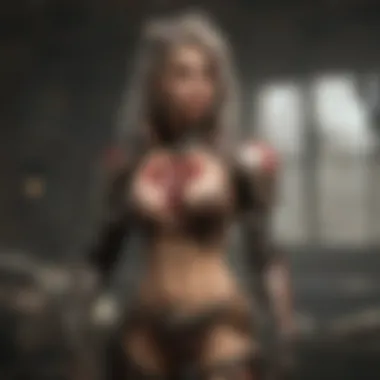

My Little Pony: Background and Appeal
On the other side of the spectrum lies My Little Pony, a show that’s charmed millions with its vibrant world brimming with friendship and harmony. With its cheerful characters and inspiring messages, it seems a far cry from the dystopian realities of Fallout. However, this juxtaposition is where the appeal intensifies. The original series, My Little Pony: Friendship is Magic, crafted an expansive lore with characters embodying traits like loyalty, honesty, and kindness.
This idyllic universe attracts diverse demographics, transforming casual viewers into fervent fans ready to embrace its lessons. It’s not simply about cute ponies; it’s the underlying philosophies of friendship and cooperation that resonate with audiences, creating a passionate community willing to explore beyond the conventional boundaries of storytelling.
The Genesis of Fallout Equestria
Now, bring these two worlds together, and you arrive at the inception of Fallout Equestria. This fan fiction originated on the Fimfiction site, crafted by an ambitious writer going by the name Kkat in 2011. The concept of merging Fallout’s gritty apocalypse with the colorful charm of My Little Pony wasn’t just a daring gamble; it resonated with many, turning it into a cult phenomenon.
In this narrative, the familiar characters of Equestria are thrust into a chaotic, shattered world, clashing with their principles and ideals. Themes of survival become inextricably linked with the essence of friendship—how do you maintain bonds in an unforgiving landscape? This ingenious blend of two disparate genres captivates readers, allowing them to explore fresh perspectives on well-loved characters. It’s not merely a remix; it’s a profound commentary, and it has opened doors for new storytelling possibilities within the realms of fan fiction.
"Fallout Equestria epitomizes the resilience of creativity, illustrating how fan-driven narratives can birth entirely new universes while paying homage to their roots."
This introduction sets the stage for a deeper exploration of the thematic elements, character interactions, and the cultural impact that makes Fallout Equestria an exemplary instance of storytelling innovation.
Thematic Elements of Fallout Equestria
The thematic elements found in Fallout Equestria not only enrich the narrative but also underline the intricate relationship between the two universes it melds. Exploring these elements provides a lens through which one can better understand the emotional and philosophical underpinnings of the story. This exploration is invaluable for discussing how a fan-driven narrative can invoke profound themes even in a seemingly innocent setting.
Contrasts and Parallels in Worldbuilding
Fallout Equestria juxtaposes the vivid, cheerful realm of Equestria against the bleakness of a post-apocalyptic Fallout world. This contrast isn’t merely aesthetic; it serves to enhance a reader's understanding of loss and survival. By taking beloved characters, like the ponies, and placing them in a world ravaged by nuclear war and societal collapse, it triggers a compelling emotional response.
The inherent optimism of My Little Pony clashes starkly with the despair and moral ambiguity stemming from the Fallout series. The tales of heroics from Equestrian legends become sorrows in the wastelands. Readers often find themselves pondering how the vibrant ideals of friendship need to adapt in a world where choices can lead to dire consequences.
"The brightest day can have the darkest night; such is the tale of Equestria's resilience in the fallout’s shadow."
This layering of contrasts—between innocence and corruption, companionship and isolation—deepens the narrative. It challenges readers to reflect on their own values and perceptions of friendship, even in the direst of circumstances.
Themes of Friendship and Survival in a Wasteland
At its core, Fallout Equestria examines friendship not simply as a social contract but as a vital lifeline in a world steeped in misery. While one might expect friendships to flourish amongst joyous ponies, the harsh environment of the wasteland leads to a redefined understanding of companionship. Survivors are compelled to forge relationships based on necessity, trust, and shared trauma.
Characters navigate through moral dilemmas that force them to choose between saving friends and self-preservation. In this bleak setting, bonds formed are often tested in ways that mirror real-life struggles. The exploration of loyalty versus personal gain opens up discussions surrounding the nature of true friendship, challenging the idea that camaraderie can only exist in safe, happy environments.
Survival becomes the main theme that underscores this camaraderie. Each character's journey reveals how friendships can morph into something more resilient amidst chaos, portraying not just physical survival but emotional survival through the connections they forge.
Exploration of Morality and Choice
In a way, Fallout Equestria serves as an ethical playground. The narrative invites readers to witness choices that can swing between compassion and violence, often without clear right or wrong answers. This ambiguity is a hallmark of both the Fallout franchise and the new interpretations presented in Equestria's darkest corners.
Every situation poses difficult riddles: helping a stranger might lead to mistrust among allies, while betrayal can sometimes be seen as the only route to preserve one's integrity. Characters are often forced to weigh the larger good against personal desires, leading to a rich discourse on morality.
Examining such themes is crucial, as it touches on questions relevant to any society confronting crisis. What are our ethical bounds when survival is at stake? Where does one draw the line between right and wrong? Through character choices, Fallout Equestria becomes a narrative exploration of humanity itself, forcing readers into philosophical realms where clarity is scarce, yet reflection is abundant.
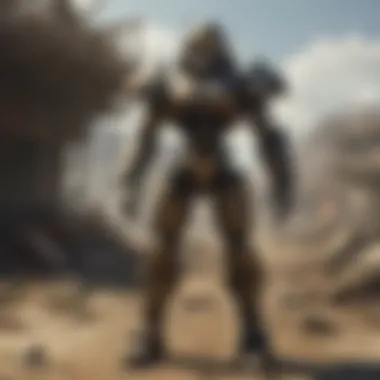

Character Analysis
The theme of character development serves as a linchpin in the narrative universe of Fallout Equestria. The way characters are molded, evolve, and interact with their environment adds depth to the story, making it an enthralling read for fans of both My Little Pony and the Fallout series. This section will delve into the protagonists, antagonists, and supporting characters, illustrating how each group contributes to the larger tapestry that defines this crossover.
Protagonists: Their Journey and Development
At the core of any compelling story lie its protagonists, and Fallout Equestria offers a rich cast of central characters that navigate the perils of a wasteland, simultaneously contending with their own personal demons. The protagonist, Littlepip, is perhaps one of the most explored figures within the narrative. Her transformation from a naive pony living in the safety of a shelter, to a battle-hardened hero embodying the virtues of courage and kindness, showcases a remarkable character arc. Littlepip's journey is more than just a physical one; it encapsulates the emotional growth that many can relate to.
The story mirrors the duality of My Little Pony’s themes of friendship against the backdrop of a desolated land where trust is scarce. This contrast elevates the protagonist’s journey, allowing readers to engage with her internal struggles. The reader experiences her process of discovering what it truly means to be a friend, even amidst chaos and betrayal.
Additionally, supporting protagonists, like Velvet Remedy and Calamity, each add layers to Littlepip's development. They provide different perspectives on morality and choice, further enriching the storytelling experience. Through them, the narrative explores an array of personality traits, turning what could be a singular viewpoint into a multifaceted exploration of relationships in dire situations.
Antagonists: Complex Figures in a Broken World
Antagonists in Fallout Equestria are anything but one-dimensional; they resemble shadows haunting the protagonists, yet often carry their own struggles and motivations. The primary villain, the Goddess, represents a juxtaposition of destructive power tied to a formidable backstory. As the reader uncovers the layers of her motivations, they find a tragic history that evokes sympathy rather than mere disdain. This complexity prompts readers to ponder the nature of villainy in a world regulated by survival instincts.
There's also the Enclave, showcasing a polarizing view on leadership and authority. They present a stark contrast to the protagonists, often embodying the horrors of dictatorial rule. However, their ideologies challenge the main characters to question what true freedom means. This prompts a reflection on the choices one must make when faced with threats that manipulate or exploit fear.
These characters serve not just as foes but as catalysts for deeper philosophical inquiries. Their presence instills a sense of urgency that underscored the complexity of the post-apocalyptic narrative.
Supporting Characters: Their Roles and Significance
Supporting characters in Fallout Equestria play crucial roles; they enhance the central storyline and breathe life into the wasteland. Characters like Pinkie Pie, with her blend of cheerful insanity and resilience, act as a stark reminder of the lightness that can still exist, even in darkness. Her presence juxtaposes the harsh realities, suggesting that laughter and hope can endure amidst suffering.
Moreover, characters such as Steelhooves, a robotic ally, amplify the narrative's emotional stakes. His backstory intertwines with themes of sacrifice, valor, and personal redemption, evoking a sense of depth that resonates throughout the narrative progression. Each supporting character is not merely a backdrop; rather, they expand the narrative scope and challenge protagonists in unexpected ways. From their complicity in shaping moral dilemmas to creating moments of levity, these figures are pivotal in weaving the rich storyline of Fallout Equestria.
In summary, the character analysis of Fallout Equestria reveals a world populated by complex personalities whose experiences and conflicts serve as a reflection of broader themes in both the Fallout series and My Little Pony. It’s this intricate weaving of characters that captivates fans, inviting them to reflect on their own values and decisions within their life’s journey.
Narrative Techniques in Fallout Equestria
In any storytelling universe, the techniques used to weave narratives can either elevate or diminish the experience for the audience. In the case of Fallout Equestria, the narrative techniques serve not only to tell a compelling story but also to enrich the unique blend of Fallout's grim post-apocalyptic world with the vibrant elements of My Little Pony. From the way the tale is structured to the subtleties of dialogue and the layered meanings behind symbols, these techniques are pivotal in bringing the story to life and making it resonate with the readers.
Narrative Structure: Chronology and Perspective
Fallout Equestria utilizes a non-linear narrative structure that ups the intrigue and complexity of the story. By flipping back and forth through time, the narrative draws readers into the broader consequences of actions that may initially seem trivial. For example, a character's decision early in the tale might be referenced in a different light later, enriching the plot with layers of meaning that prompt reflection on the choices made.
Additionally, multiple perspectives are employed to provide varied viewpoints on key events. This technique allows readers to see the storyline through the eyes of different characters, from loyal friends to dubious foes. The shifting perspectives generate a dynamic storytelling experience; it’s like piecing together a jigsaw puzzle where every character adds a necessary fragment to understand the complete picture. This not only keeps the readers engaged but also encourages them to empathize with each character's plight, even if their motivations might seem questionable at times.
Use of Dialogue and Internal Monologue
Dialogue plays a crucial role in Fallout Equestria, serving as a primary avenue for character development and the progression of the storyline. Characters' conversations are layered with subtext and often showcase their inner conflicts. For instance, conversations that initially appear straightforward may carry deeper implications. This approach not only makes the characters feel more authentic but also gives insights into their backgrounds and motivations.
Internal monologue further deepens this experience. When a character reflects on their choices, the readers are granted an intimate view of their psyche. This insight builds tension and fosters a bond between the reader and the character, as struggles are shared in a raw and unfiltered manner. Lines that depict self-doubt or moments of clarity create a connection, drawing the audience deeper into the character's emotional landscape.
Symbolism and Motifs: Deeper Meanings
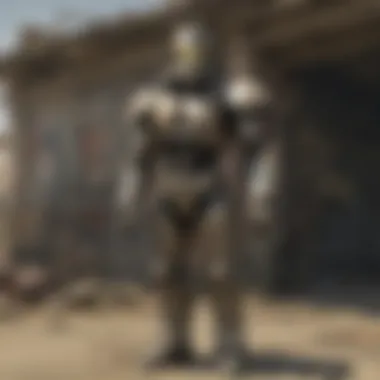

The story is rich with symbolism and motifs that elevate its narrative depth. An example often cited is the recurring imagery of the wasteland juxtaposed against the idealized settings of the My Little Pony universe. This contrast symbolizes not just the lost innocence but also the harsh realities that the characters must face.
Motifs such as friendship, loyalty, and sacrifice reoccur throughout the story, offering a stark commentary on survival in a world that has been turned upside down. Each symbol invites readers to look beyond its surface; for instance, a simple item like a toy can evoke memories of happier times and serve as a touchstone for the characters.
In short, the narrative techniques employed in Fallout Equestria are key to its success. They invite readers to navigate complex emotions and grapple with the realities of a world where hope and despair coexist in a delicate balance. As the characters journey through the wasteland, they embody themes and ideals that speak to the heart of both the Fallout and My Little Pony franchises, enriching a reading experience that is as profound as it is entertaining.
Cultural Impact of Fallout Equestria
Exploring the cultural impact of Fallout Equestria reveals much about the landscape of fan creativity and its ability to shape communities. This fan fiction, which intertwines the beloved aspects of My Little Pony with the stark narratives of the Fallout universe, does not merely satisfy niche interests but has provoked broader conversations about storytelling and fandom. Its significance transcends being a mere crossover; it acts as a cultural touchstone for a diverse audience, forging connections that go well beyond mere entertainment.
Influence on the Fan Community
Fallout Equestria has acted like a beacon, drawing people from varied backgrounds into its orbit. The extensive lore established within the narrative has kindled various discussions and fan creations. Online forums and social media platforms like Reddit and Facebook have seen numerous threads where fans exchange ideas, theories, and fan art. These spaces are alive with debate about character motivations, plot trajectories, and what the future might hold for this universe.
Moreover, cosplay has burgeoned from this fan fiction. With characters like Littlepip gaining iconic status, fans recreate their appearances, leading to vibrant communities at conventions. Not only does this influence the culture surrounding Fallout Equestria, but it also bridges connections with the larger Fallout and My Little Pony fandoms, blending styles and narratives in unexpected ways.
Crossovers and Intertextuality
The blending of these two worlds results in a rich tapestry of crossovers and intertextual references. Fallout Equestria continuously draws from established themes and motifs within both universes. Elements such as the struggle for survival in harsh environments or the exploration of friendship in seemingly desolate worlds resonate strongly within fans. Readers find themselves navigating a narrative that honors both Fallout’s grim post-apocalyptic themes and the vibrant, friendship-centric ethos of My Little Pony.
These crossovers often provoke fans to draw parallels between characters from different universes, stirring intriguing discussions about how they might interact if placed in a shared setting. This interplay champions creativity and encourages writers across the spectrum to engage with each other's intellectual properties. The network of fan-generated content only expands from here, giving rise to a multitude of works inspired by the original narrative.
Critical Reception and Analysis
Though originating from fan creation, Fallout Equestria's reception has garnered attention from critics and scholars alike. Many analyses focus on its themes of morality, identity, and the contrast between innocence and decay. It challenges the prevailing narratives in both its source materials by presenting a nuanced view of character struggles and moral dilemmas, which invites deeper scrutiny.
"The fusion of the hopeful heart of My Little Pony with the wreckage of Fallout creates an unexpected dialogue about resilience and redemption in the face of despair."
Critics have highlighted its ability to transcend simple parody, instead presenting a work that can stand on its own merit. Articles and papers discussing the implications of the narrative's complexity can be found on scholarly platforms, illuminating the artistic value of fan fiction as a legitimate form of literary expression.
Finale: The Enduring Legacy of Fallout Equestria
The realm of Fallout Equestria has carved out a niche that resonates with both Fallout enthusiasts and My Little Pony fans. Its impact on the fan fiction world extends far beyond mere entertainment; it demonstrates the power of blending disparate narratives to create something remarkable. This legacy lies in its ability to transcend traditional boundaries of storytelling and fandom.
Reflections on Fan Fiction as a Medium
Fan fiction, often dismissed as a lesser form of literature, showcases the creativity and fervor of a passionate community. Fallout Equestria exemplifies this positive potential. It allows fans to explore unique scenarios and complex character arcs that may not fit into the original frameworks of either franchise. The juxtaposition of cheerful ponies against a backdrop of desolation serves as a fertile ground for exploring deeper themes such as loss, resilience, and friendship.
Through various storytelling techniques, this work highlights how fan fiction can challenge established norms. It empowers fans not only to engage with loved storylines but also to contribute to them. By giving characters new paths to tread, readers and writers can engage in a dialogue with the source material, fostering a community around shared interests.
"Fan fiction isn't just about rewriting stories. It's about reimagining worlds, finding meaning in what we love."
Additionally, Fallout Equestria demonstrates fan fiction's accessibility. Writers from various backgrounds come together, enriching the narrative’s collective tapestry. This variety results in diverse perspectives and alternate interpretations, making this medium one of both personal expression and collaborative creativity.
Future Prospects for Fallout Equestria
As the world evolves, so too does Fallout Equestria. The potential for this universe to develop further is vast. With new technologies and platforms potentially on the horizon, fans may have even more opportunities to expand and enhance this narrative. Innovations in storytelling might pave the way for interactive experiences, perhaps altering how we engage with the storyline.
Moreover, as the interest in both Fallout and My Little Pony persists, there is a chance for new creators to emerge, offering fresh takes on established narratives. This can include exploring underrepresented characters or historical arcs that warrant further elaboration.
Fallout Equestria could expand its footprint within the broader fan universe, crossing paths with new franchises. Crossover projects can breathe new life into familiar tales, provoking curiosity and sparking discussions from both communities.
In short, the future of Fallout Equestria hinges on the ever-growing passion of its fan base. With the commitment to artistic freedom and narrative exploration, this universe not only promises to endure but to thrive and flourish, attracting even wider audiences.


Unveiling the Timeless Elegance of Brahmin Leather Goods: A Journey Through Luxury and Craftsmanship

